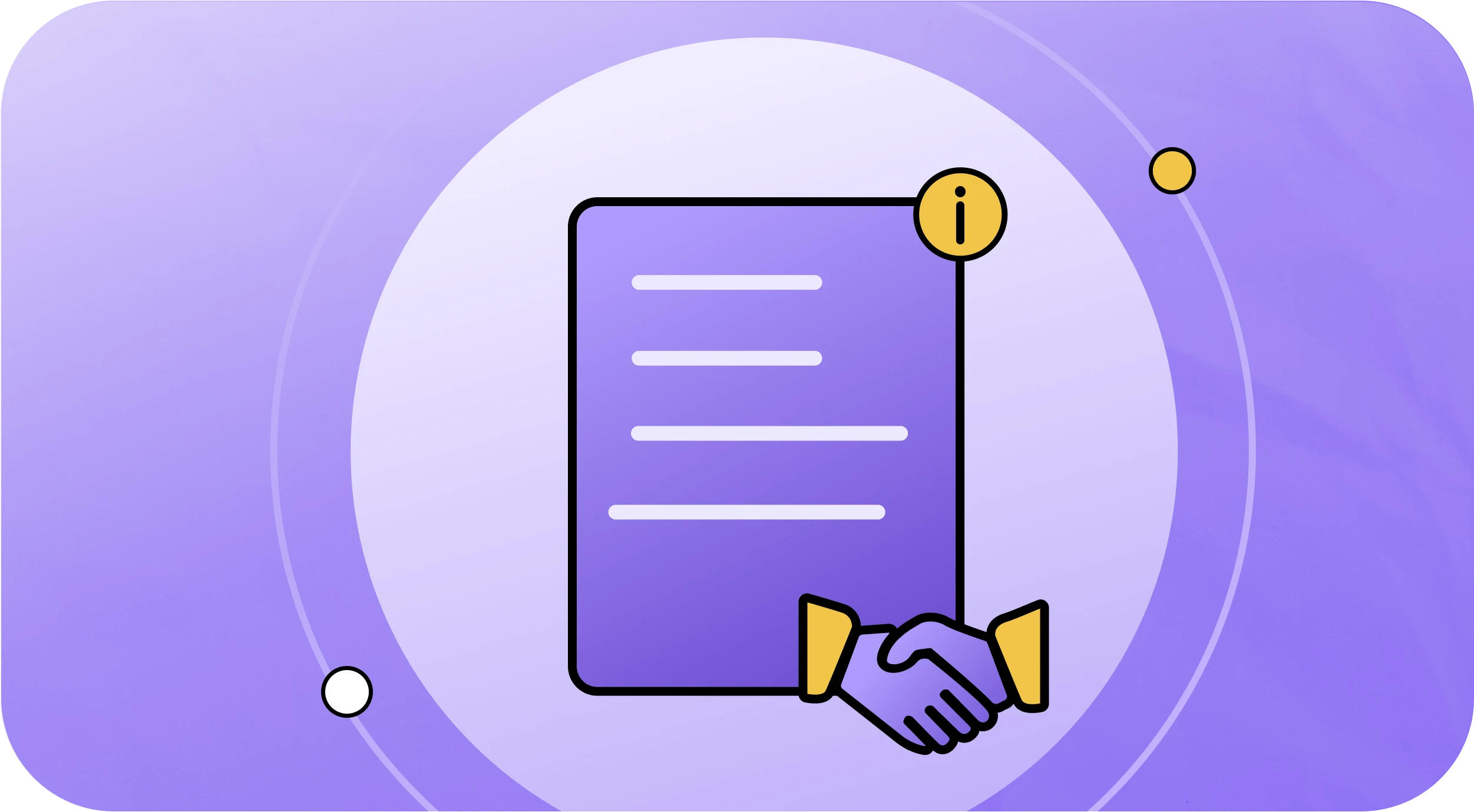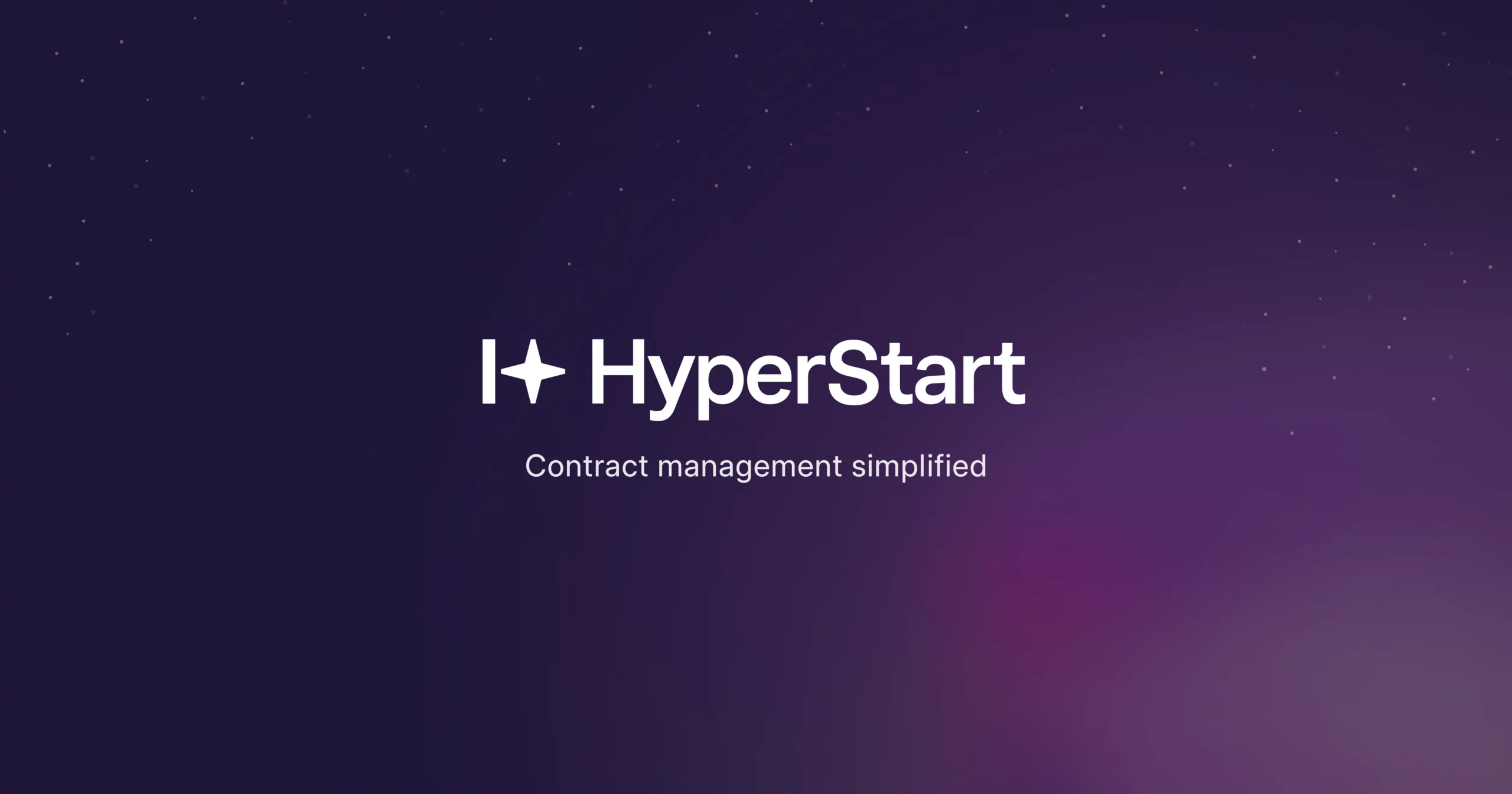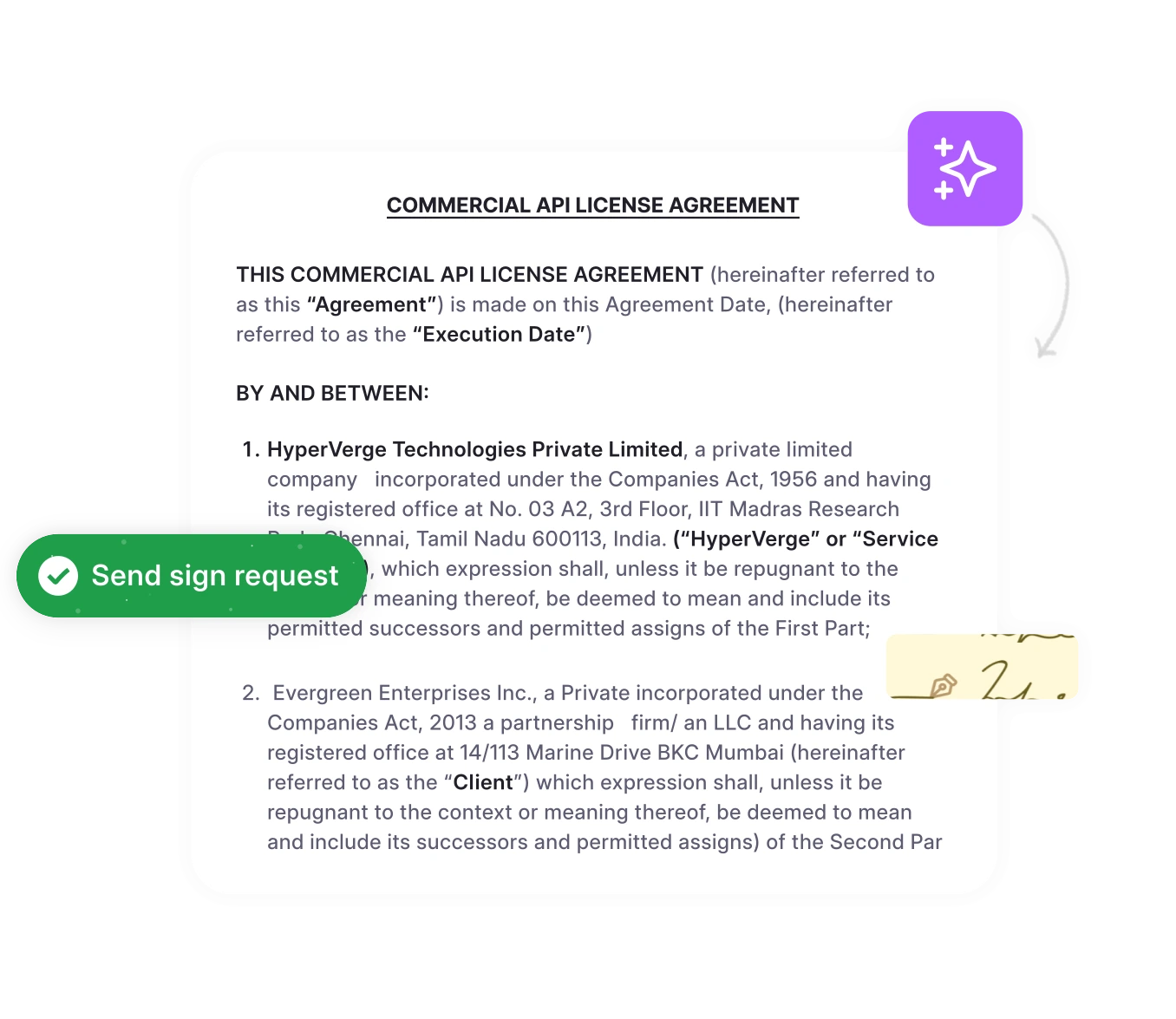Legal teams managing dozens of boilerplate contracts spread across email threads, shared drives, and outdated templates face a common challenge — contract chaos. From tracking renewal dates to ensuring consistent terms, unilateral NDA management often becomes an administrative burden that pulls legal professionals away from strategic work.
This comprehensive guide offers practical frameworks to help legal teams understand, draft, and manage unilateral NDAs at scale. You’ll also learn how modern contract management tools streamline NDA processes and bring order to scattered documentation.
What is a unilateral NDA?
A unilateral NDA (non-disclosure agreement) is a one-sided legal contract in which only the recipient is obligated to protect the other party’s confidential information.
Unlike mutual NDAs, where both parties exchange and protect confidential information, a one-way non-disclosure agreement establishes an asymmetrical relationship with data flowing in only one direction.
Key characteristics:
- Single disclosure obligation: Only the recipient maintains confidentiality
- Asymmetrical protection: The disclosing party shares information without reciprocal obligations
- Most common NDA type: Use in business confidentiality situations
Common examples:
- Employment situations: Company shares trade secrets with new employees
- Vendor relationships: Business provides proprietary data to contractors or consultants
- Investment discussions: Startup discloses business plans to potential investors
Unilateral vs mutual vs bilateral NDAs vs multilateral NDA
Understanding when to use different types of NDA prevents legal teams from over-complicating straightforward confidentiality situations or under-protecting sensitive bilateral exchanges.
| NDA Type | Information Flow | Typical Use Cases | Legal Complexity |
| Unilateral NDA | One-way only | Employee onboarding, vendor briefings, investor pitches | Low – single obligation set |
| Mutual NDA | Two-way exchange | Joint ventures, partnerships, M&A discussions | Medium – balanced obligations |
| Bilateral NDA | Two-way (same as mutual) | Business development, strategic alliances | Medium – reciprocal protection |
| Multilateral NDA | Multiple parties | Consortium projects, multi-party ventures | High – complex obligation matrix |
This handy table will eliminate any confusion regarding the different types of NDAs. With that out of the way, let’s focus more on the different use cases where a unilateral NDA makes the most sense.
Streamline your contract management today
Automate NDA workflows, ensure compliance, and boost legal team productivity.
Book a DemoWhen should legal teams use unilateral NDAs?
Legal teams should deploy unilateral NDAs in specific business scenarios where information asymmetry exists and one-way confidentiality protection suffices:
1. Employee and contractor onboarding
New hires accessing proprietary systems, processes, or customer data must be subject to confidentiality commitments without reciprocal obligations from the company.
2. Vendor and supplier briefings
Third-party service providers need access to business requirements, technical specifications, or operational details to deliver services effectively.
3. Investment and funding discussions
Startups or businesses seeking capital disclose financial data, business models, and growth strategies to potential investors or lenders.
4. Customer discovery and sales processes
Sharing detailed product roadmaps, pricing strategies, or competitive positioning with potential customers during lengthy sales cycles.
5. Consulting and advisory engagements
External experts require a deep understanding of business context, performance metrics, or strategic plans to provide meaningful recommendations.
6. Technology licensing conversations
Disclosing technical specifications, patent details, or implementation requirements to potential licensing partners.
7. Outsourcing and partnership evaluations
Potential partners require operational data, process documentation, or performance benchmarks to evaluate the viability of a partnership.
8. Legal and compliance reviews
External law firms, auditors, or compliance consultants require access to sensitive business information to provide professional services.
For legal teams managing high volumes of NDAs, implementing contract automation software reduces template customization time and ensures consistent terms across all agreements.
Essential elements and red flags in unilateral NDAs
Effective unilateral NDA management requires understanding both critical contract elements and potential risk indicators that could undermine enforceability or create compliance challenges.
Every enforceable unilateral NDA must include specific legal components that establish clear obligations while protecting both parties’ interests. Thomson Reuters legal experts emphasize that a well-crafted non-disclosure agreement gives employers clear legal recourse, as breach of NDA claims are simpler to pursue than trade secret misappropriation claims.
| Elements | Purpose | Legal Team Notes |
| Party identification | Establishes legal entities and contact roles | Verify corporate entity names and signing authority |
| Confidential information definition | Defines the scope of protected information | Be specific but not overly restrictive—balance protection with practical use |
| Permitted use restrictions | Limits the recipient’s use of disclosed information | Include “solely for evaluation purposes” language |
| Non-disclosure obligations | Establishes the recipient’s confidentiality duties | Standard care provisions and return/destruction requirements |
| Term duration | Sets the confidentiality period timeframe | Balance business needs with enforceability—typically 3-5 years |
| Exceptions and exclusions | Carves out publicly available or independently developed information | Include standard exceptions for the public domain, prior knowledge |
| Governing law and jurisdiction | Establishes a legal framework for disputes | Choose a jurisdiction favorable to the enforcing party |
4 Red flags to spot when reviewing received NDAs
Legal professionals must identify potential enforceability issues before executing agreements. These 4 warning signs often emerge during template review and can be addressed through careful drafting.
1. Overly broad confidentiality definitions
Agreements that could encompass public information or unreasonably broad categories of data face enforceability challenges in court.
2. Unreasonable time durations
Confidentiality periods exceeding 10 years without business justification may be deemed unenforceable by courts as unconscionable.
3. Missing essential exceptions
NDAs lacking standard carve-outs for publicly available information, independently developed data, or legally required disclosures create compliance risks.
4. Undefined scope and obligations
Vague language around what constitutes “confidential” information or unlimited confidentiality obligations without clear boundaries undermines legal enforceability.
What are the common mistakes to avoid when creating your own NDAs?
Template management challenges frequently create inconsistencies that weaken legal protection across organizations. Avoid these 5 common mistakes to ensure stronger and more enforceable agreements.
1. Using outdated legal templates
Superseded legal language or obsolete regulatory requirements can render agreements unenforceable or non-compliant with current laws and regulations.
2. Failing to customize for business context
Generic templates that don’t reflect specific industry requirements, relationship types, or business models often lack necessary protections.
3. Inconsistent confidentiality definitions
Different business units using varied terminology and scope definitions create confusion and potential enforcement gaps.
4. Missing industry-specific requirements
Healthcare organizations need HIPAA considerations, while financial services require specific regulatory compliance language.
5. Poor integration with existing agreements
NDAs that conflict with employment contracts, vendor agreements, or other existing legal commitments create enforcement complications.
Legal teams managing multiple NDA templates benefit from contract template management systems that ensure version control and consistent terms across all agreements.
NDAs use very specific language to ensure the agreement can be enforceable in court. Before you sign, verify that the non-disclosure agreement clearly defines what constitutes confidential information and the duration of the contract.
Read
Challenges in managing unilateral NDAs at enterprise scale
Managing unilateral NDAs manually can quickly lead to contract chaos, creating both compliance risks and productivity challenges for legal teams. As NDAs proliferate across email systems, shared drives, and physical files, legal professionals often struggle to gain centralized visibility into active confidentiality obligations.
Common challenges include:
- Scattered storage: Agreements stored in multiple locations make it difficult to locate the proper NDA when needed.
- Manual tracking errors: Spreadsheets and manual tracking of key dates and obligations are prone to mistakes, increasing the risk of missed deadlines or inconsistent enforcement.
- Inconsistent templates: Using different NDA versions across departments can create ambiguous terms, weaken enforceability, and introduce compliance gaps.
- Renewal and termination failures: Without systematic oversight, renewal notifications may be overlooked, resulting in lapsed protection, accumulated obligations, or unclear termination procedures.
- Administrative inefficiencies: Manual template customization, duplicate data entry across systems, and time spent locating agreements drain significant legal team resources.
- Inconsistent approval workflows: Lack of standardized processes causes delays, bottlenecks, and missed deadlines, further impacting productivity.
By understanding these challenges, legal teams can identify areas where automation and centralized management of unilateral NDAs can significantly improve efficiency, reduce risk, and ensure consistent compliance across the organization.
80% of respondents believe AI will have a high or transformational impact on their work within the next five years. This marks a 3 percentage point increase from the 2024 report.
72% of legal professionals surveyed view AI as a force for good in their profession.
53% of respondents indicated that their organizations are already seeing a return on investment (ROI) from AI investments.
Read
Transforming NDA workflows through technology
AI-powered automation benefits extend beyond basic efficiency gains. Modern AI contract review platforms automatically extract key terms from existing NDAs, identify inconsistencies, and flag potential risks, reducing review time by up to 80% while improving accuracy.
Firms must abandon antiquated, manual workflows in favor of purpose-built, intelligent platforms that can cost-effectively and reliably address the collective needs of all parties in the NDA process. Firms that adopt technology to solve these issues are the ones that will emerge as leaders in the space.
Read
Advantages of centralized contract management:
- Single source of truth for all confidentiality agreements
- Automated renewal alerts and compliance monitoring
- Standardized approval workflows across business units
- Real-time visibility into confidentiality obligations and exposures
Enterprise-scale NDA management requires contract repository software that provides centralized visibility, automated tracking, and intelligent search capabilities across all confidentiality agreements.
Take control of your contracts
From creation to proactive renewal alerts, manage contracts efficiently and securely.
Book a DemoHow to select the right unilateral NDA template
Selecting and customizing unilateral NDA templates requires striking a balance between legal protection and practical business needs, while ensuring enforceability across various jurisdictions and business contexts.
Template selection framework
Industry-specific considerations vary significantly across business sectors.
- Healthcare NDAs need HIPAA considerations.
- Financial services require regulatory compliance language.
- Technology companies focus on intellectual property protection.
- Manufacturing emphasizes trade secret preservation.
Relationship context factors also influence template selection:
- Employee NDAs differ from vendor or investor agreements
- Short-term consulting requires different terms than long-term partnerships
- High-stakes technology disclosures need stronger protection than routine vendor briefings
- International relationships require multi-jurisdictional enforceability considerations
Risk tolerance alignment ensures that the template’s strength matches the disclosure’s sensitivity and potential competitive impact.
Best practices for template management
Selecting the correct template is a good start, but managing it presents a distinct challenge that many businesses struggle with. Here are 5 pointers to help you achieve the best results.
1. Maintain version control
Track every template update through a centralized contract repository to ensure teams always use the latest legally approved version.
2. Conduct periodic legal reviews
Schedule regular audits to confirm templates comply with evolving laws, regulations, and internal policy changes.
3. Document customization guidelines
Define clear rules for when and how templates can be modified to preserve consistency and enforceability across departments.
4. Align templates with business processes
Ensure that each NDA template aligns with the company’s operational contract workflows and integrates seamlessly with existing systems.
5. Integrate with contract collaboration tools
Integration with contract collaboration software provides seamless access to business units while maintaining legal oversight.
Manage unilateral NDAs effortlessly with HyperStart
Legal teams spending excessive time on NDA administration face a clear choice: continue managing scattered agreements manually, or embrace intelligent automation that transforms contract chaos into organized operations. Modern unilateral NDA management demands integrated workflows, automated tracking, and thoughtful review capabilities.
HyperStart’s AI-powered contract management software helps legal teams process NDAs 80% faster while maintaining rigorous protection standards. From automated template generation to proactive renewal management, our platform ensures confidentiality agreements support business velocity rather than hindering it.
Legal professionals can focus on strategic contract negotiations and business enablement, rather than managing administrative overhead and manually tracking data across disconnected systems.










